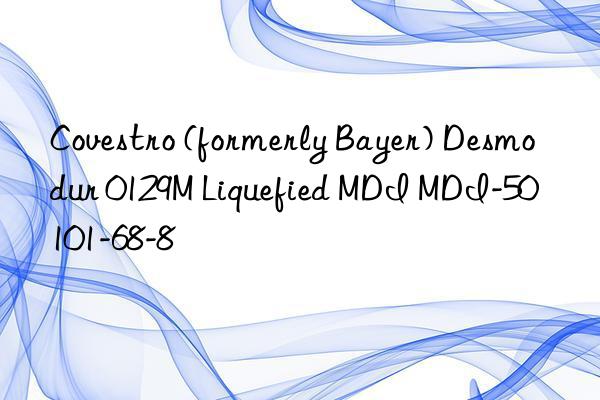
Product Introduction
Desmodu 0129 M is 4,4'-, 2 ,4' and 2,2'-.Mixture of diphenylmethane diisocyanate. Among them, the relative content of 2,4'-isomer is higher. This product is mainly used in the production of polyurethane products.
Sampling
in During the sampling process, prevent the product from contacting with water vapor
Specifications
|
Item |
Indicators |
unit |
Test method |
|
2,2'-MDIcontent |
≤ 0.8 |
% by wt. |
AM 2012 |
|
2,4'-MDIcontent |
55 ± 5 |
% by wt. |
AM 2012 |
|
12 -20 |
℃ |
|
|
|
Viscosity (25°C) |
12 ± 2 |
mPa .s |
AM 2016 |
|
density (25°C) |
about .1.21 |
g /cm³ |
DIN 51757 |
Packaging
drums, storage tanks, etc.
Storage conditions
Recommended storage temperature: 20-30℃
shelf life
6 months (waterproof, airtight storage)
Operation suggestion
Like all isocyanates, Desmodur TP . PU 0129 M is very sensitive to water and reacts with water to produce insoluble urea and carbon dioxide. In a closed container, the carbon dioxide produced will cause the pressure of the container to rise and cause danger.
Storing raw materials in an environment above 30°C will accelerate the formation of dimers and shorten the shelf life of the product.
Storing Desmodur TP. PU 0129 M in a crystalline or partially crystalline state will also relatively accelerate dimer formation, which should also be avoided. If not much dimer is produced, the crystallized product can still be used by fast melting. But pay attention to the melting temperature between 60 to 70 ℃. The temperature at which the product is heated cannot exceed 70°C. Once melting is complete, the product should be homogenized and cooled down to the recommended temperature for storage. Since this treatment will inevitably produce more dimers, it is recommended to use up the product as soon as possible. If air enters, especially if the product is exposed to light for a long time, it will make the product polluted, yellowed, etc.
Storing Desmodur TP. PU 0129 M in a crystalline or partially crystalline state will also relatively accelerate dimer formation, which should also be avoided. If not much dimer is produced, the crystallized product can still be used by fast melting. But pay attention to the melting temperature between 60 to 70 ℃. The temperature at which the product is heated cannot exceed 70°C. Once melting is complete, the product should be homogenized and cooled down to the recommended temperature for storage. Since this treatment will inevitably produce more dimers, it is recommended to use up the product as soon as possible. If air enters, especially if the product is exposed to light for a long time, it will make the product polluted, yellowed, etc.

 微信扫一扫打赏
微信扫一扫打赏

